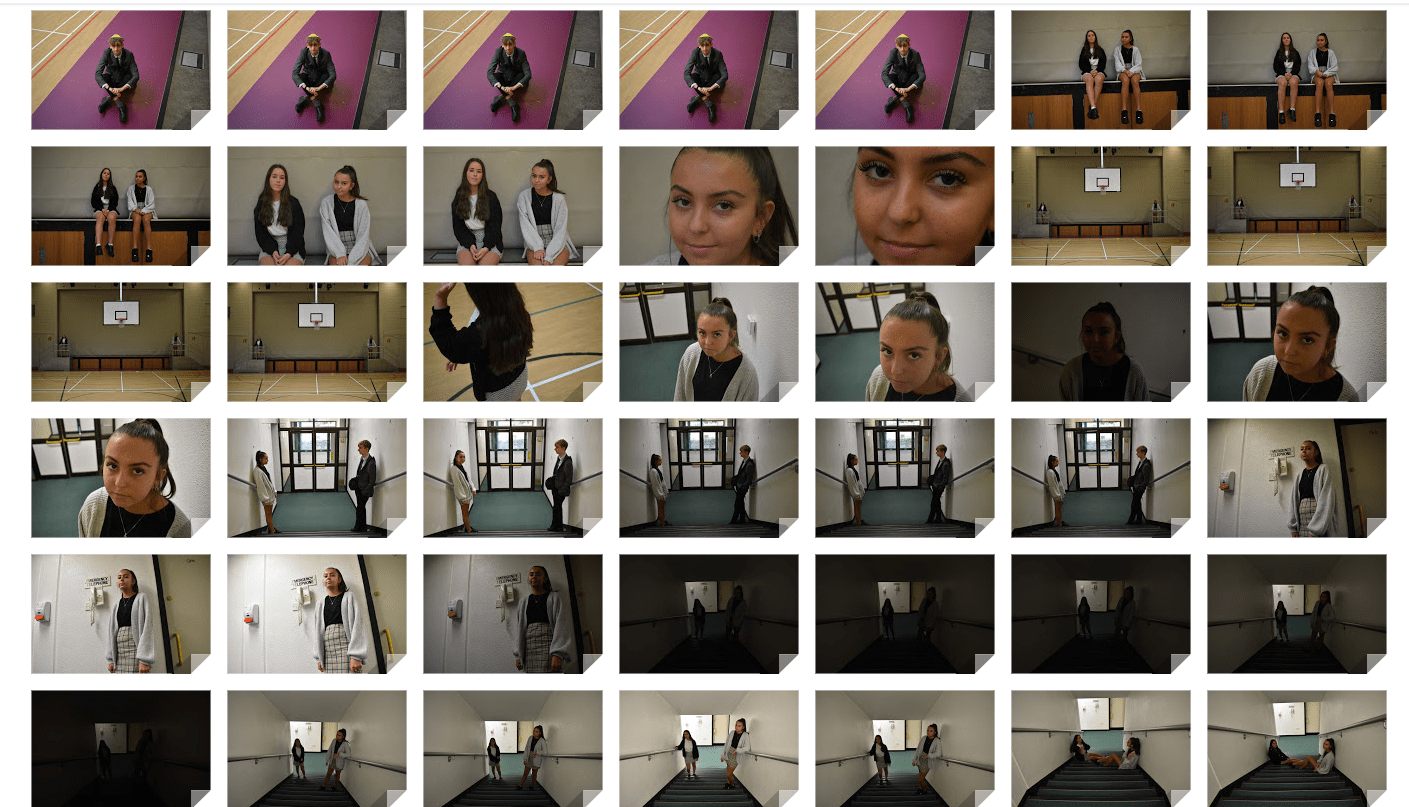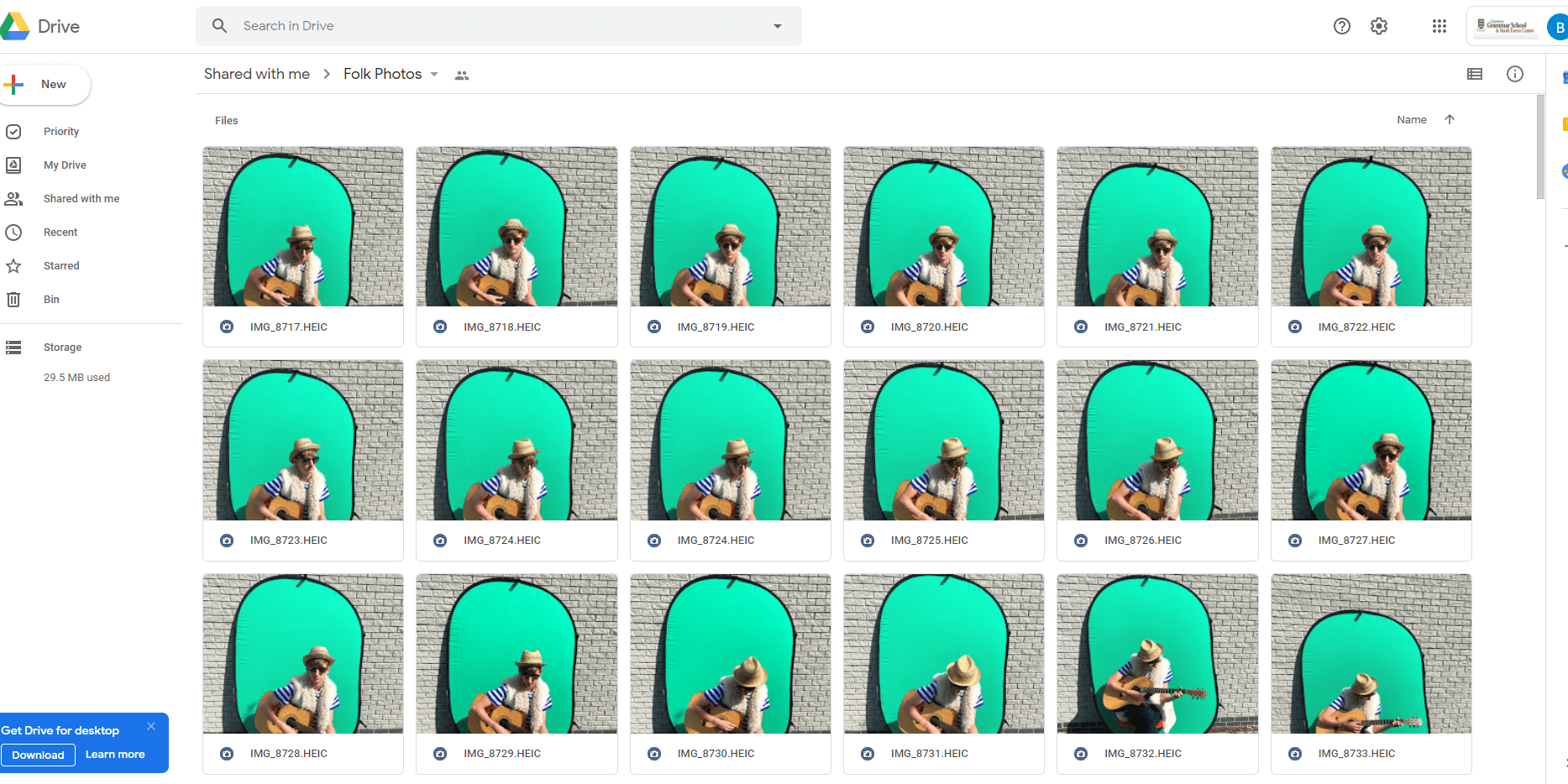This is a mood board for the genre of folk for my tour poster. These tour posters are colourful and eye catching to the audience. One of the common themes with these posters is that the text is capitalised, bold and the fonts are serif. The biggest text in the posters are the artist names, they attract the reader and they tell the audience exactly who they are going to see. The posters don’t mix many colours, the colour palette is very simple and they use at most 4 colours. Having done an analysis of these posters will benefit me as I will be creating my own Folk tour poster. I have understood the conventional features of a Folk tour poster for example the different fonts, the colour pallet and how the text is placed to attract the reader.
In my Tour Poster I used AIDA. The attention is my outfit and my guitar, the interest is my tour dates, my design is the fonts and the pug, and the action is the website.
Feedback on the Brief
- Does it fulfil the brief as stated in the blog?
My poster fulfils the brief as I have used the right conventional features for a Folk tour poster. Such as; the right colour palette scheme for my poster, using the right format (A4), the correct positioning of text, the right font (serif), adding a pug to the poster, the name of the artist, displaying the right information such as when the tour is and where it is held and where to get the information from.
Feedback on colours:
- Has the design used a consistent colour scheme?
- Is there a relationship between the colours in the image and the colour of the graphic design?
- Do the colours seem typical of the genre?
The design has used a consistent colour scheme which involves colours such as yellow and white for the text and black for the outline of the text.
Between the colours of my image being mostly white from my coat and hat, black from my shoes and jeans and golden yellow from my guitar they share the same colours of my text from my graphic design.
The colours of my poster fit the genre of my tour poster as they are bright and have a warm tone, I haven’t added too many colours together as this is what the professional tour poster makers have done.
Feedback on typeface:
- Is all the text legible?
- Is the typeface well chosen and does it suit the apparent genre?
- How many typefaces are used in the design?
The text is legible as i’ve used the right colours and the right font and the right text size so you can read when it is in front of the image.
The type face suits the genre as it is bubbly and bold, and it works for this genre.
2 typefaces are used in my design being bold and black.
Feedback on integration of image and graphics
- Does the text wrap around the image well?
- Does the eyeline of the model focus attention?
The text does wrap around the image pretty well as it has the right spacing between each of the different texts.
I have put a square half way down the page and turned it opaque, I did this so the focus point of the model catches the eye at the top of the page.
Feedback on image
- Does the costume reflect a particular genre?
- Is the body language of the model appropriate?
The costume reflects the genre of Folk mostly because of the coat and hat being that style.
The body language of the model is appropriate as he is laid back and looks calm and this is a common theme in Folk Posters.
Feedback on copy
- Do the words on the page prompt a sense of desire?
- Is there a clear call and a route to action? (AIDA)
Your comment:
Feedback on connotations
- What messages and ideas are being communicated in the text?
- Do those messages and ideas seem appropriate to the genre and purpose of the text?
The messages and ideas that are being communicated are that the character in the image appears to be laid back and not worried about anything. The messages seem appropriate to the genre as folk music is usually very relaxed and peaceful. Also the text I have chosen comes across to the reader as very calm and friendly.















